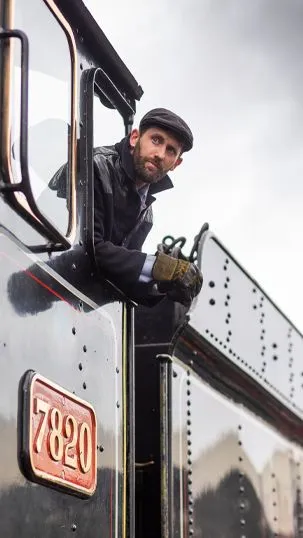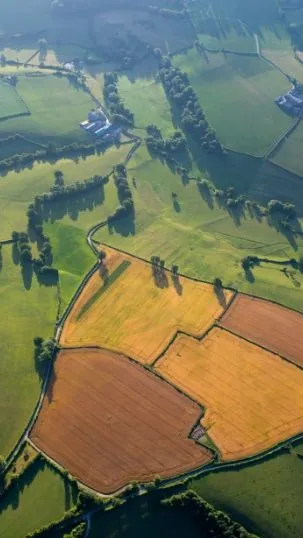
Taking time to reflect on the new Golden Age of Steam
The 19th-century institution still captivating visitors to this day
The Gloucestershire Warwickshire Steam Railway got the green light in 1899. Today, more than 120 years later, it’s an even greater cause for excitement.
Time travel really is possible thanks to a crusading grantor that’s reviving the vintage age of steam to open up some of the nation’s most spectacular scenery. It’s achievable thanks to the hard work, passion and dedication of its 900 volunteers who keep the Gloucestershire Warwickshire Steam Railway running through 14 miles of glorious Cotswolds countryside.
They are the custodians of a new but no less authentic age of travel. Today, gathering leisurely pace in the heart of England, it has all the pomp and ceremony of a bygone era.
Subtle wafts of burning coal and oil drift through restored carriages as the unmistakeable whistle of a mid-1900s locomotive and billowing clouds of steam leave smiling passengers mesmerised. A visit is a time capsule feast for the senses in which bands of volunteers love their work and revel in the rhythm of the steam’s puff, the piston drumbeat and the clack clack of train doors an instant before the station master’s whistle.
“People fall in love with our steam railway and what it stands for, what it has achieved and what it’s yet to achieve. It’s only when people come here, sit back and immerse themselves in the whole living museum experience that they’re suddenly reminded what a soulless experience rail and car travel has become.”
Ian Crowder, the railway's volunteer Press Officer







Trundling back in time
The 140,000 annual passengers of the non-profit heritage railway, an electricity grantor with overhead lines at two key sites, can easily close their eyes and trundle back in history. No need for mobiles and social media here.
“What a lovely way to spend the day,” one group opines. “I could stay on here for hours. It’s so relaxing. There’s no rush,” says a thirtysomething son to his dad… testimonials unlikely to be heard on the rail network of today.
That they’re uttered at all is music to the ears of the heritage train lovers who fought tooth and nail to keep what was once a double-track main line alive when British Rail were stripping it of every available asset in the late 70s.
The history of the track
It was once part of a vital Great Western Railway route that took holidaying families from Wolverhampton and Birmingham as far as Penzance in Cornwall. But in 1960, local passenger services ended and in the mid-70s the line was officially closed.
Not for long though, as local people and enthusiasts bought a 15-mile stretch and were granted permission to rebuild the line between the shopping towns of Cheltenham and Broadway. The years from 1981 to 2016 saw a series of train, track and station restoration projects that have truly vindicated the original pioneers of steam travel.
The railway, which offers expansive views towards the Malverns and Brecon Beacons on one side and the gently rolling Cotswold hills on the other, runs most days, rain or shine, with more than 50 volunteers needed to operate it on a three-train rota.

The railway track volunteers
Many of the team are retired and delighted to be using the skills from previous lives in the new steam train environment with like-minded people. Plumbers, electricians, engineers, caterers, upholsterers, estate managers, foresters and even marketing people find new purpose alongside young people at the other end of their careers.

1981
The railway has Warwickshire in its name even though it doesn’t go there. It’s a legacy of the 1981 share offer to purchase the whole route between Cheltenham and Stratford-upon-Avon… in Shakespeare’s county.
5
The railway has a long-term aim of extending a further five miles from Broadway to the national rail network at Honeybourne, where half of an island platform has already been partly rebuilt.
150
More than 150 heritage railways operate across Britain covering 560 miles of track between 460 stations, says The Heritage Railway Association.

The next generation

Aviation industry mechanic Scott Whiteley, 23, (above) uses every minute of his spare time to develop his skills rebuilding and maintaining engines: “Despite working on planes, the principle is the same and I’ve always loved trains, so it’s a perfect fit. I wouldn’t want to be anywhere else on my days off.”
He and engineering student Matthew Palmer (left) disabuse the notion of a feckless generation. Together, working side by side with other young people and railway veterans, they spend four hours at the crack of dawn preparing each loco for its day’s toil. Matthew, 18, says: “When you’re working on a 115-tonne locomotive built in 1905 you get this incredible feeling of looking after something that someone else long gone spent time working on ages before I was born. That’s amazing."

The railway has four working engines scheduled to run and five in various stages of restoration at the locomotive works and yard, which are as much a hive of activity as the platforms themselves.
“Working on the engines is great but when you see them pull out of the station it’s an indescribable feeling. We're keeping the golden age of steam alive for my generation and those to come.”
Matthew Palmer
You don't have to be a trainspotter to work here
“You don’t have to be a trainspotter or railway nut to volunteer either,” laughs Ian, volunteer Press Officer. “It helps, but if you’re enthusiastic and love meeting people in a friendly environment where people respect each other and have a bit of banter, it’s perfect.”
Station Master Noel Mason dons his smart GWSR liveried uniform to spend a day a week “out from under my good lady wife’s feet” handling the coming and goings, regulations, and health and safety requirements essential to every working railway.
His job is to ensure the timely running of the trains that chug their way over 46 bridges, a viaduct, an aqueduct, through a tunnel, countless culverts and miles of embankments and cuttings, on a strict timetable from 10am to 5.30pm each day.







Friend of the steam railway
Vegetation, overhanging trees, landslips and drainage issues caused by rain coming off the hills are constant reminders of the battle with nature. Recent slippages, a legacy of banks and cuttings built without foundations, cost millions of pounds to put right.
Estate Manager Mike Peers, a beekeeper when he’s not volunteering, liaises with National Grid’s engineers and arborists and handles all things structural on this, the last main line ever built in Britain and one of the youngest heritage railways. He says: “The three most important things for a railway are drainage, drainage and drainage. Because our cuttings are on clay and were filled by hand, it’s a constant battle.”
If things do go wrong, the GWSR Trust’s 5,000 members, many of them shareholders as far afield as New Zealand, rally round. A £200,000 bill to repair a corroded bridge over the railway near Broadway raised the repair money in just three weeks.
All aboard
As we climb aboard the train hauled by the 69-tonne Dinmore Manor steam locomotive built in 1950 – top line speed 25mph – Ian lays bare the enormous costs involved in maintaining the infrastructure of tracks, signal boxes and stations. Not to mention the engines: “It costs £500,000 to restore an engine like this."
“The army of volunteers who work with our 11 full and part-time staff are essential to the future prosperity of this jewel in the crown of the region. We’re such an integral part of the economy, we’ve just had three stations named in the Cotswolds Monopoly game.”
Mike Peers, volunteer Estate Manager

On track to boost the Cotswolds economy
Recent research shows that for every pound spent by visitors – 82% of which covers running costs, engineering and infrastructure – the local economy benefits by double. It’s proof, along with plans for a new Visitor Centre and covered carriage shed, that the decision to fight the closure was the right one.
It’s a view shared by Dan Rea, Signalman at the Winchcombe station and sidings midway between Broadway and the Cheltenham racecourse terminus. He says: “I’ve been doing this for 20 years and it’s like having your own train set. I love the responsibility because this job is all about control and safety, so it’s like being the lynchpin for the railway.”
Further down the line as we trundle into Bishop's Cleeve, we pass a nursery school where dozens of youngsters throng in the playground to wave – the driver gives them a couple of toots as his passengers wave back too.
Perhaps one day they will be volunteers.
To book a ticket back in time, volunteer or donate – or just to find out more, visit GWSR
Images courtesy of: © Roy Kilcullen






